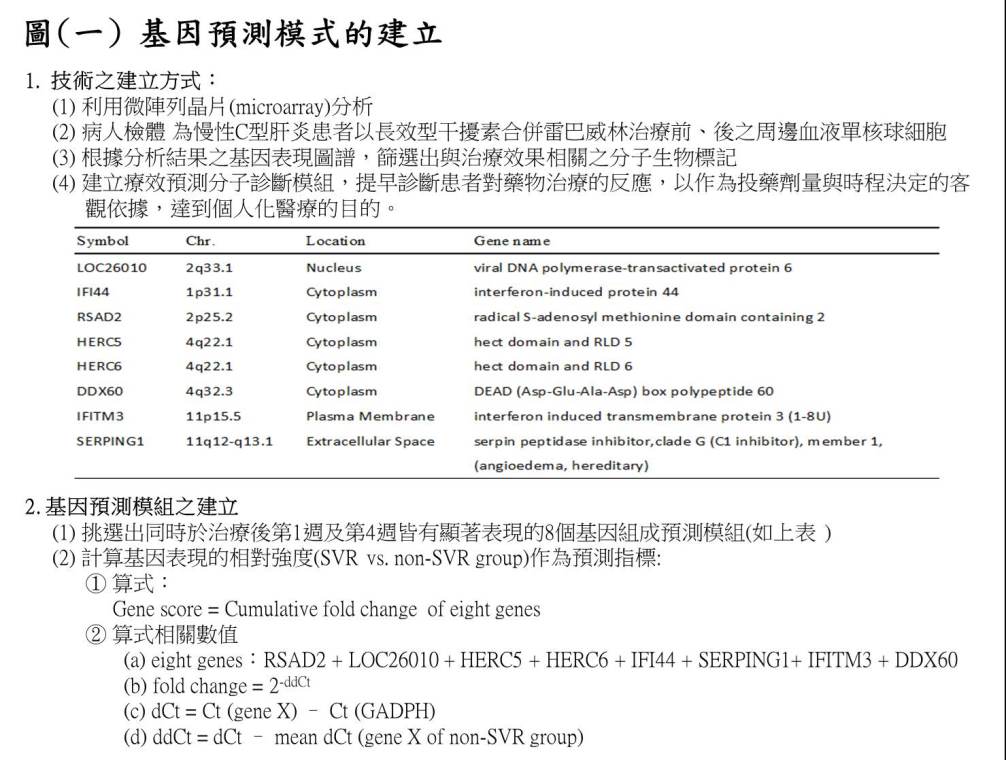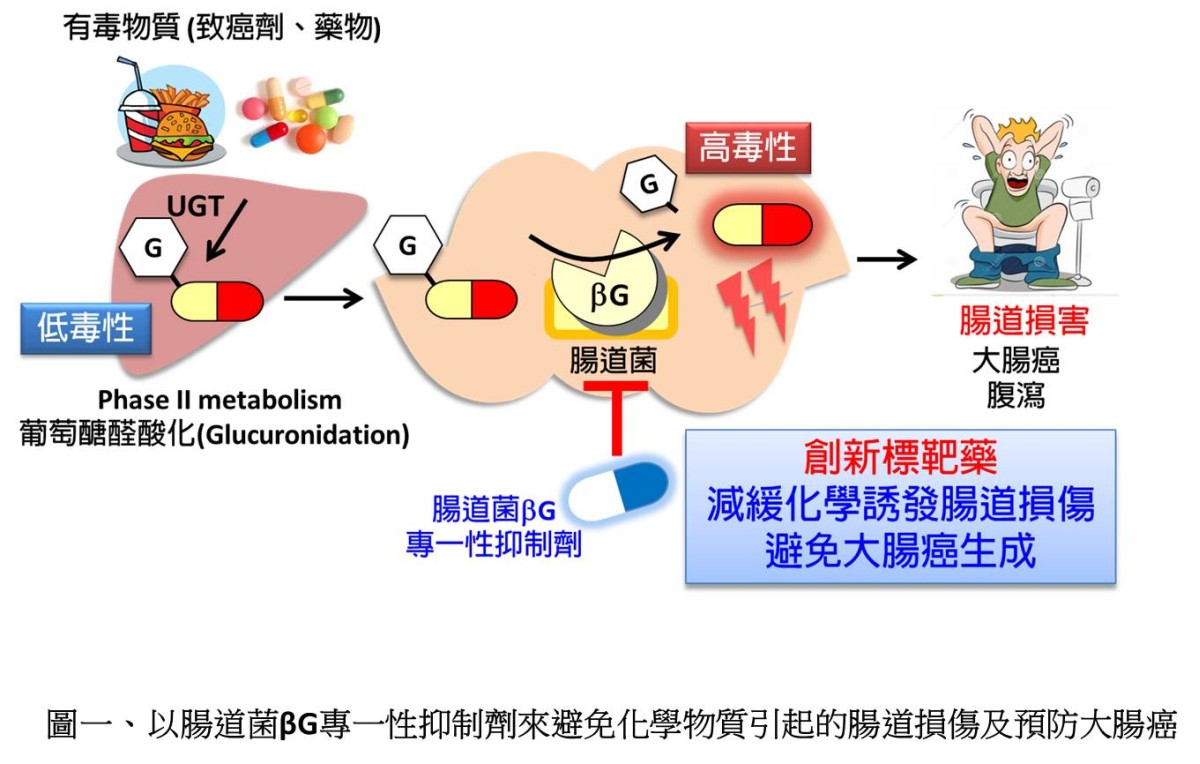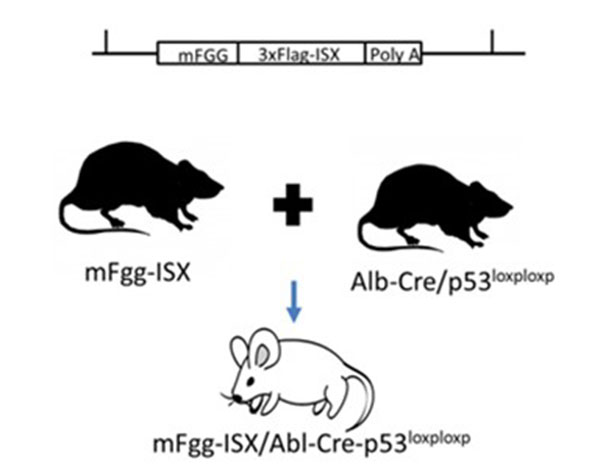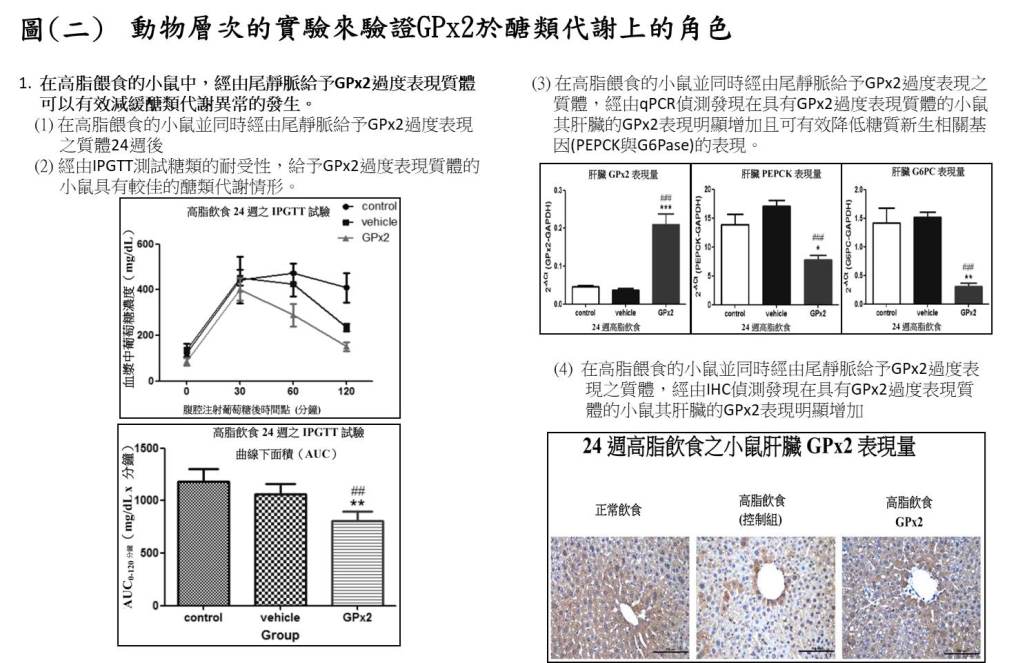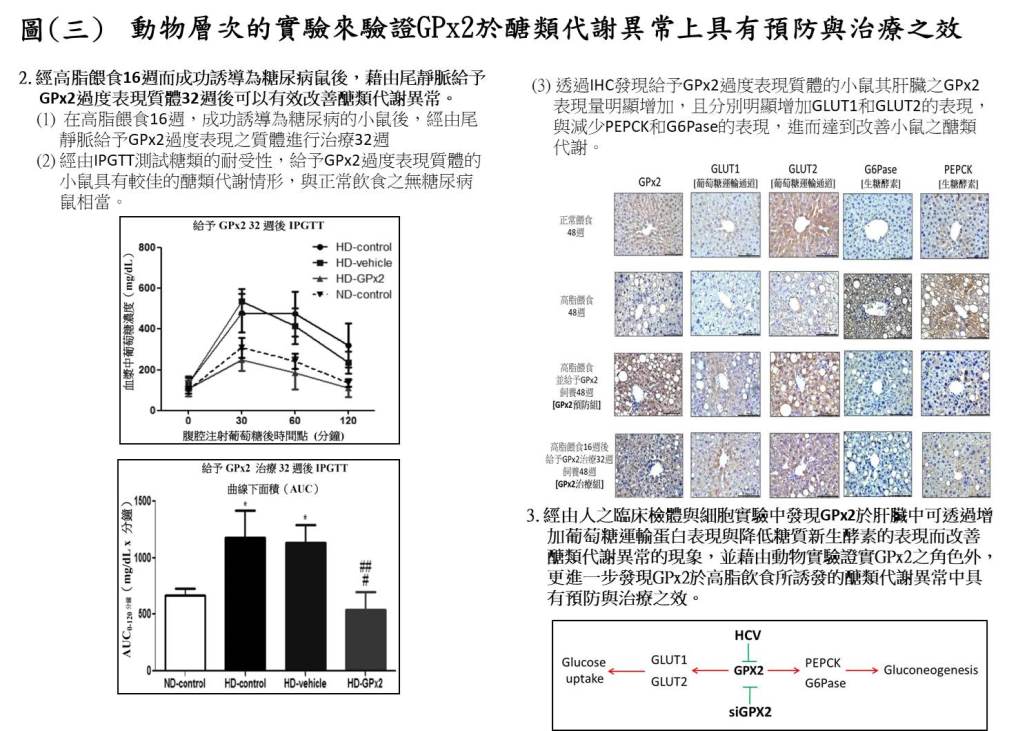| Technical Name | Method of Detecting Carbohydrate Metabolism Disorder and The Prevention and Treatment | ||
|---|---|---|---|
| Project Operator | Kaohsiung Medical University | ||
| Project Host | 余明隆 | ||
| Summary | GPx2 was significantly down-regulated among chronic hepatitis C patients with pre-DM and DM. |
||
| Scientific Breakthrough | Either hepatitis C virus infection or a high-fat diet will cause a decrease in the expression of GPx2, to decrease in glucose uptake capacity of hepatocytes and to increase in gluconeogenesis in hepatocytes, which causes an increase in blood glucose level leading to diabetes. Taking advantage of a genetic network analysis software, it is finding that GPx2 is closely related to fatty acid oxidation, glucose tolerance, glucose uptake, and gluconeogenic genes. Since hepatic insulin resistance and an increase in hepatic gluconeogenesis are important pathogenic mechanisms of type II diabetes, the present invention uses the expression of liver GPx2 as a new target for preventing and treating diabetes without causing side effects of hypoglycemia. |
||
| Industrial Applicability | The present invention is related to a method for detecting carbohydrate metabolism disorder by using glutathione peroxidase 2 (GPx2), and an application for use in the field of preventing and treating type II diabetes. |
||
| Keyword | type II diabetes insulin resistance overweight blood sugar carbohydrate metabolism disorder prevention therapy detection high fat diet HCV | ||
- kym_0115@yahoo.com.tw
other people also saw


